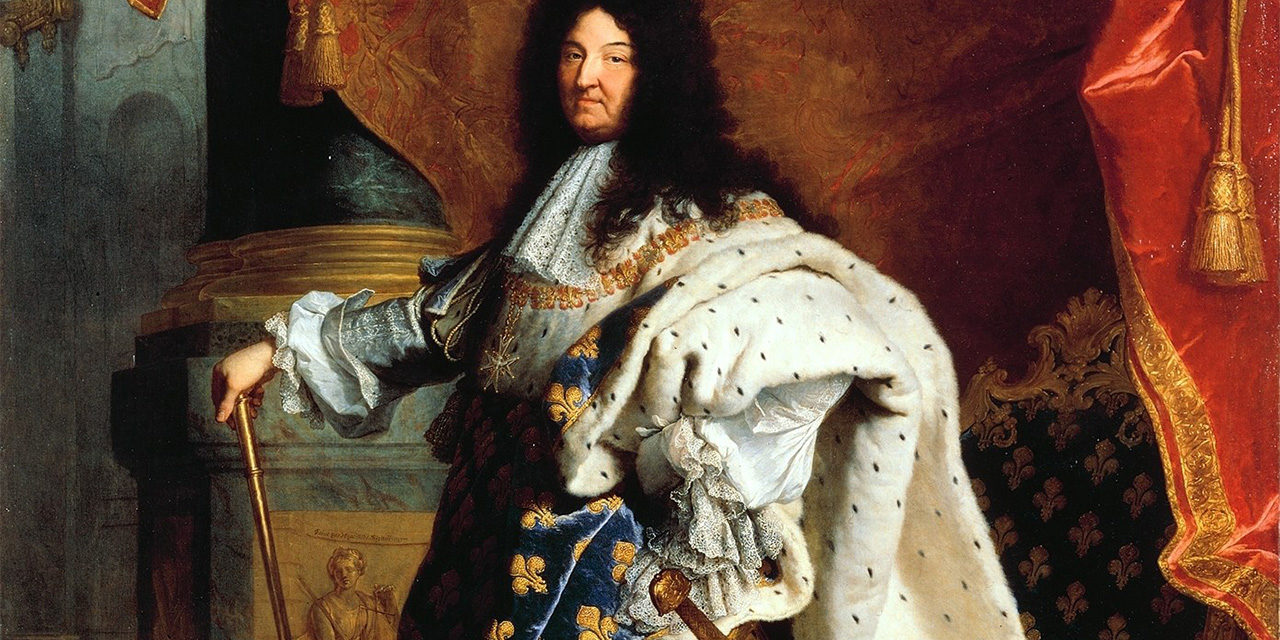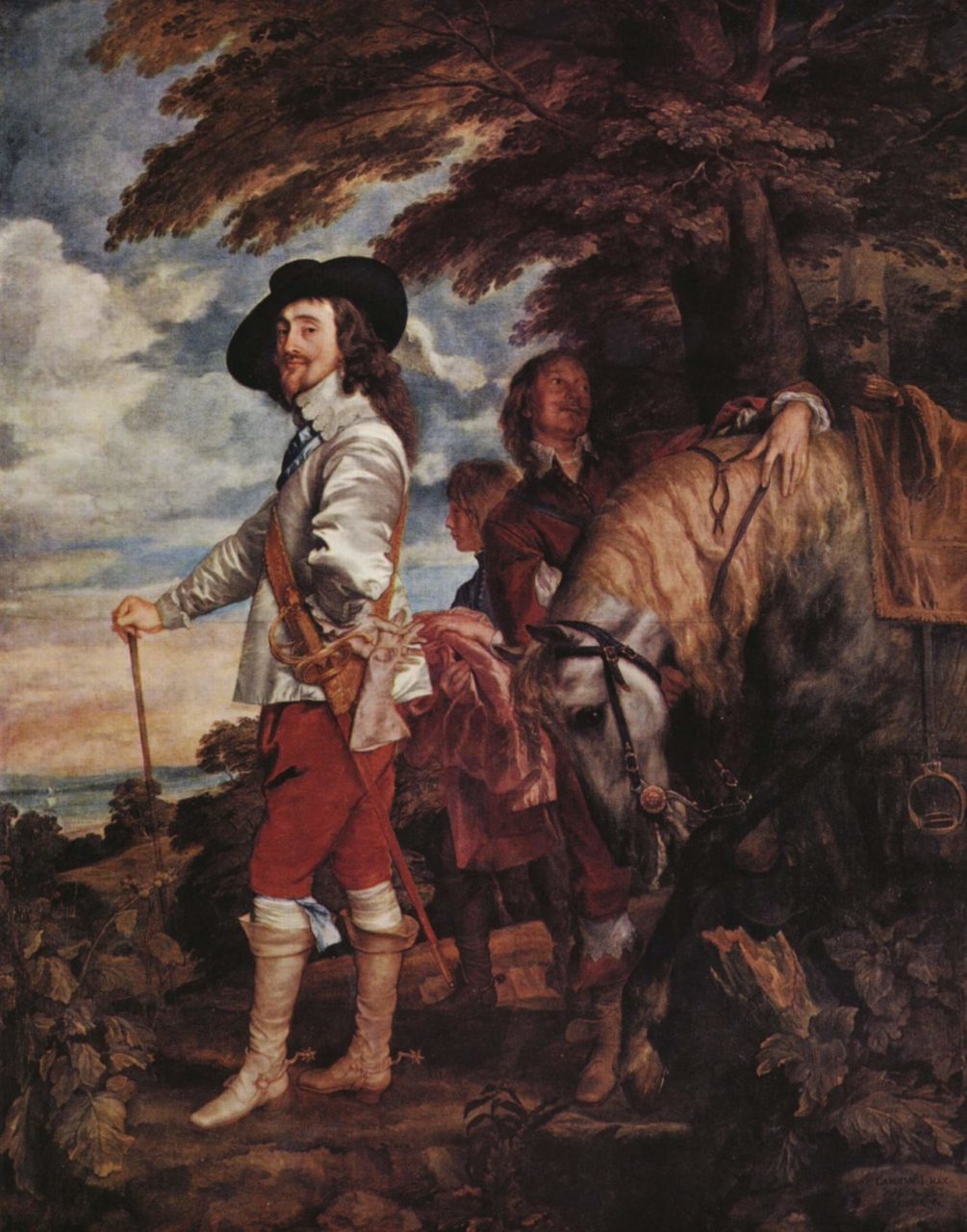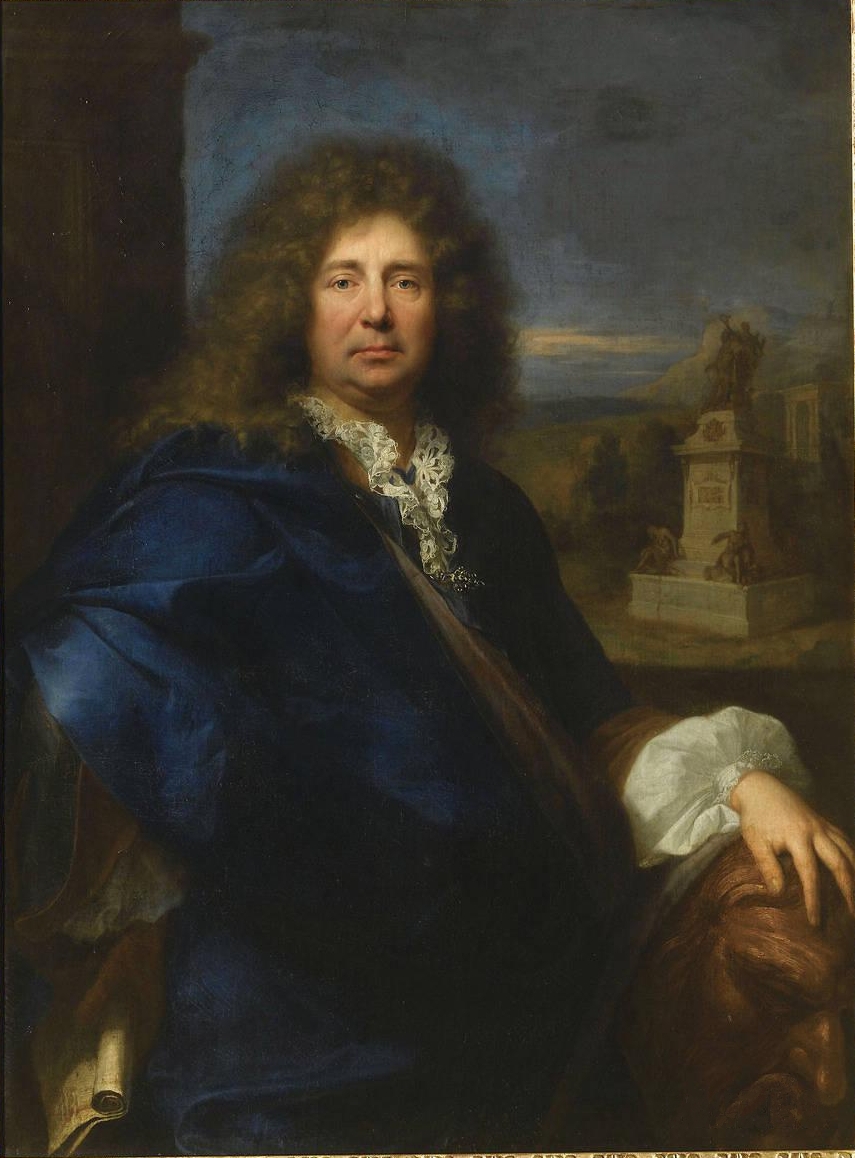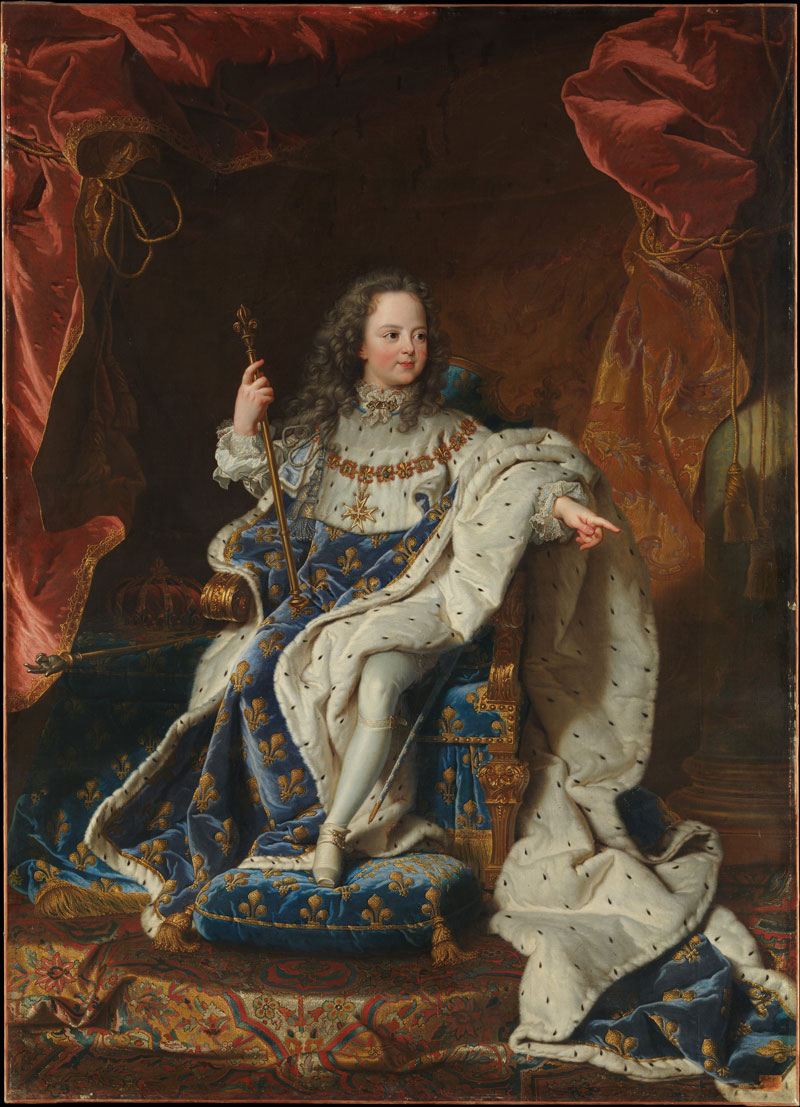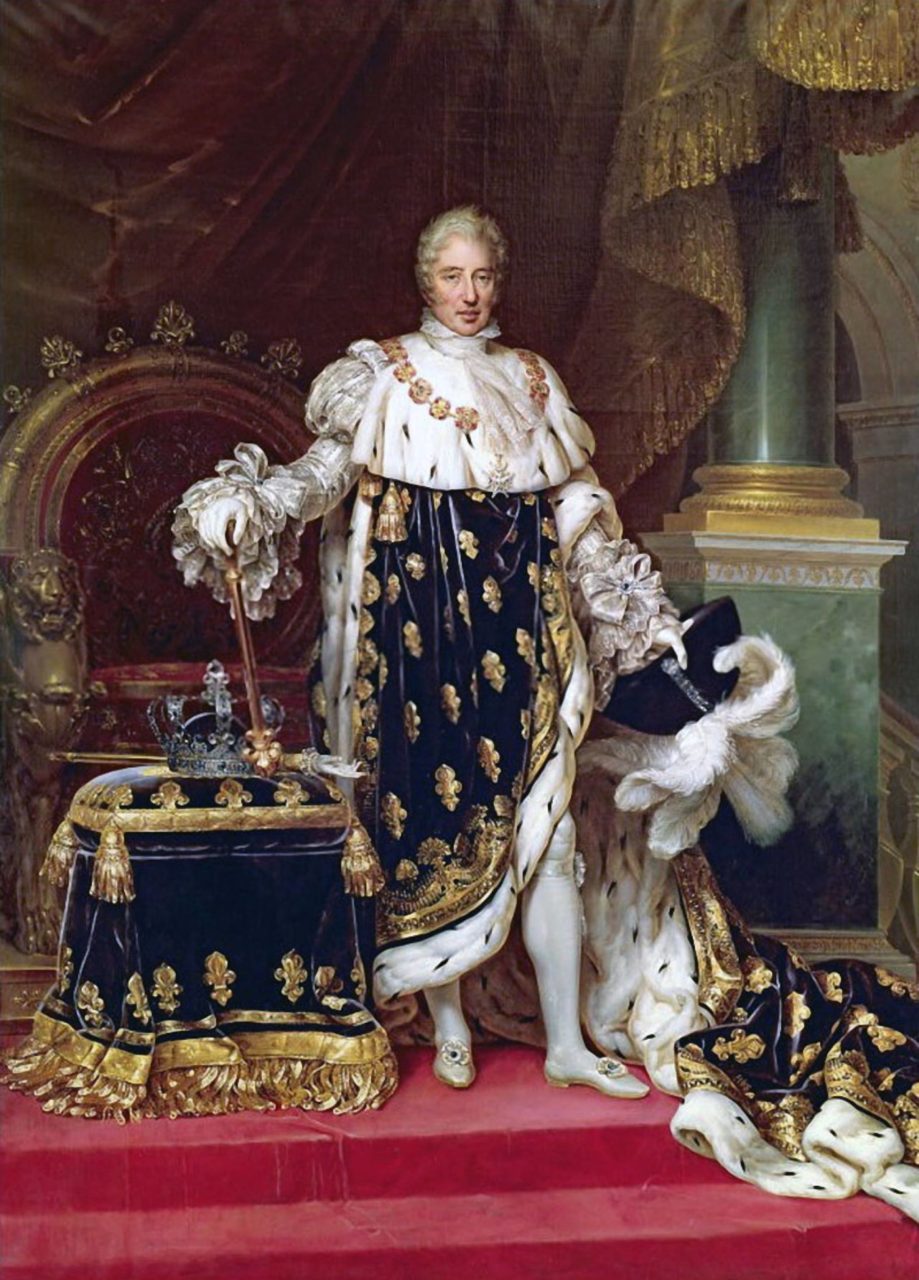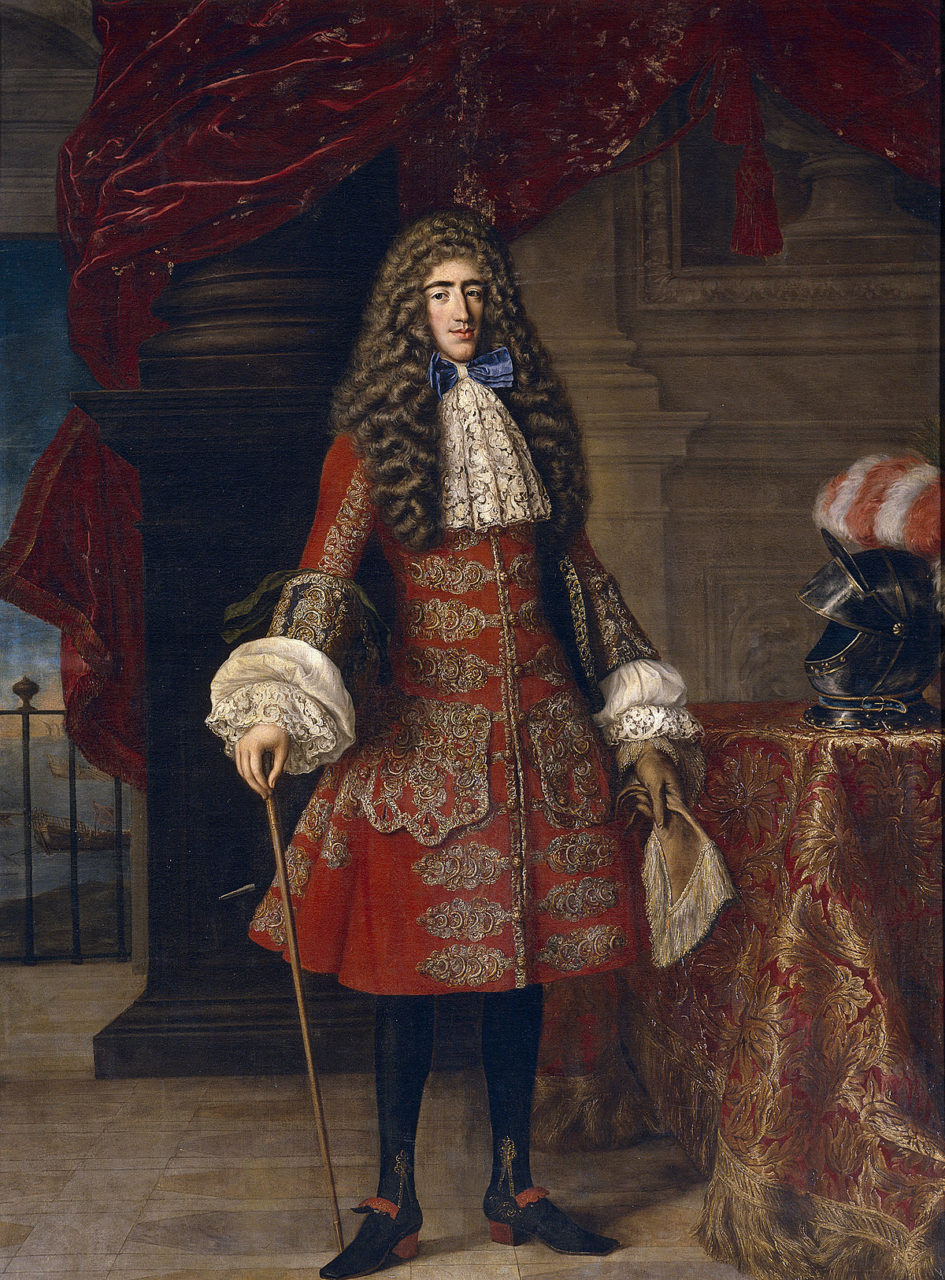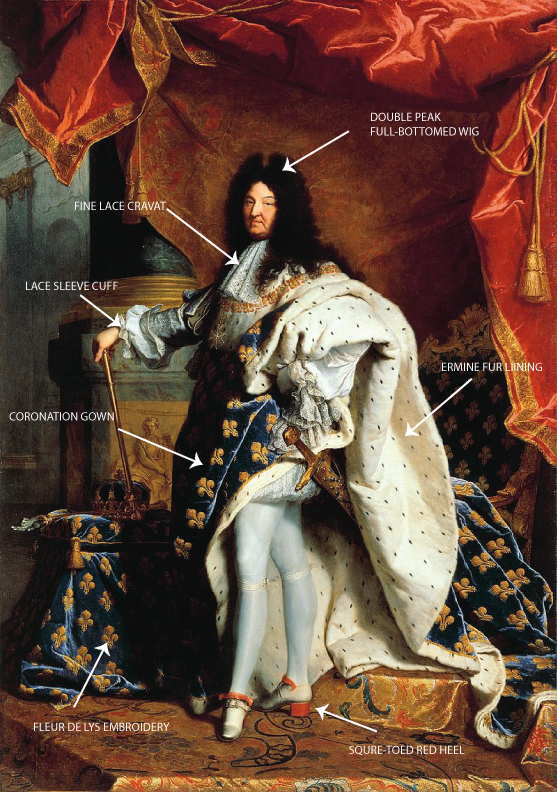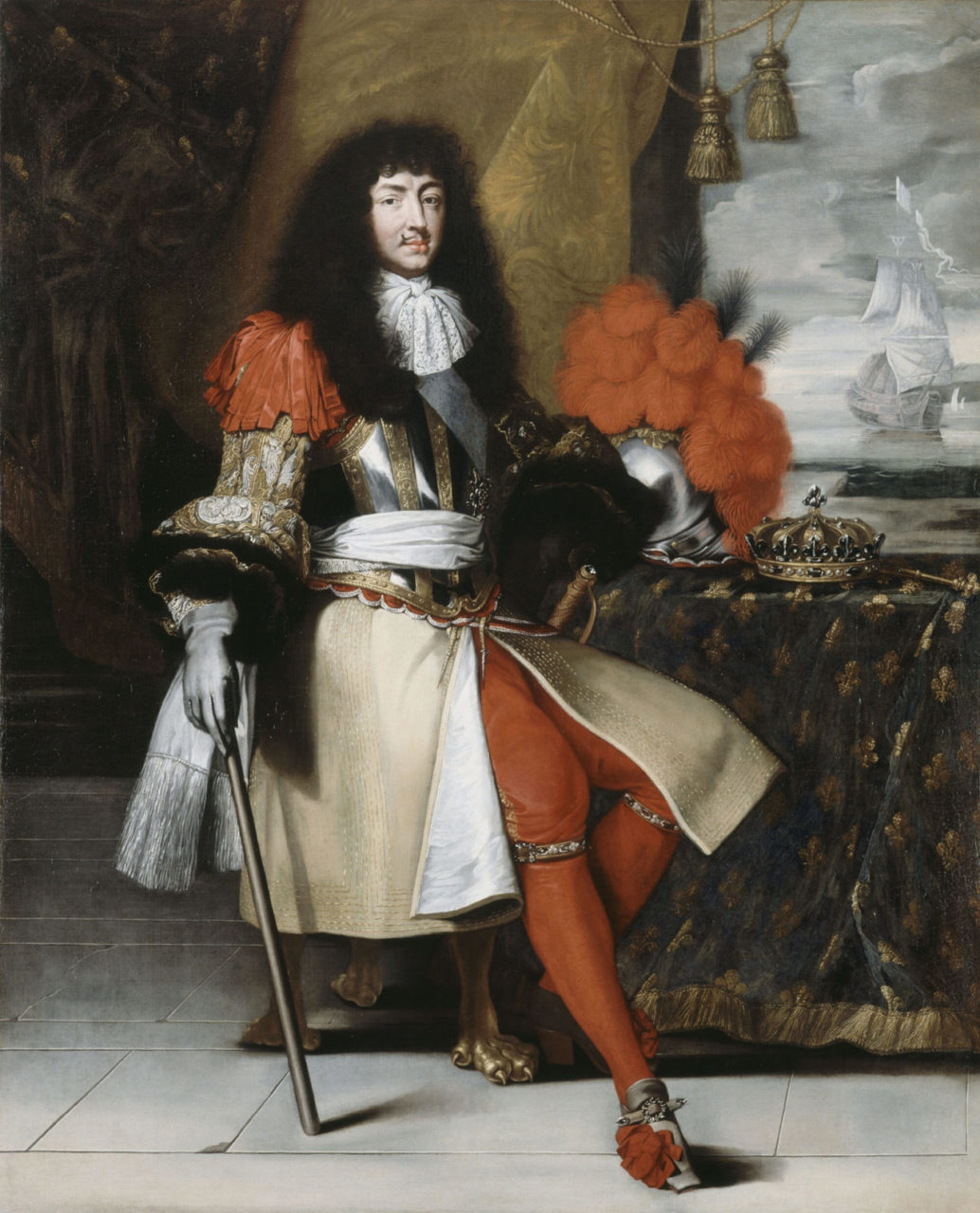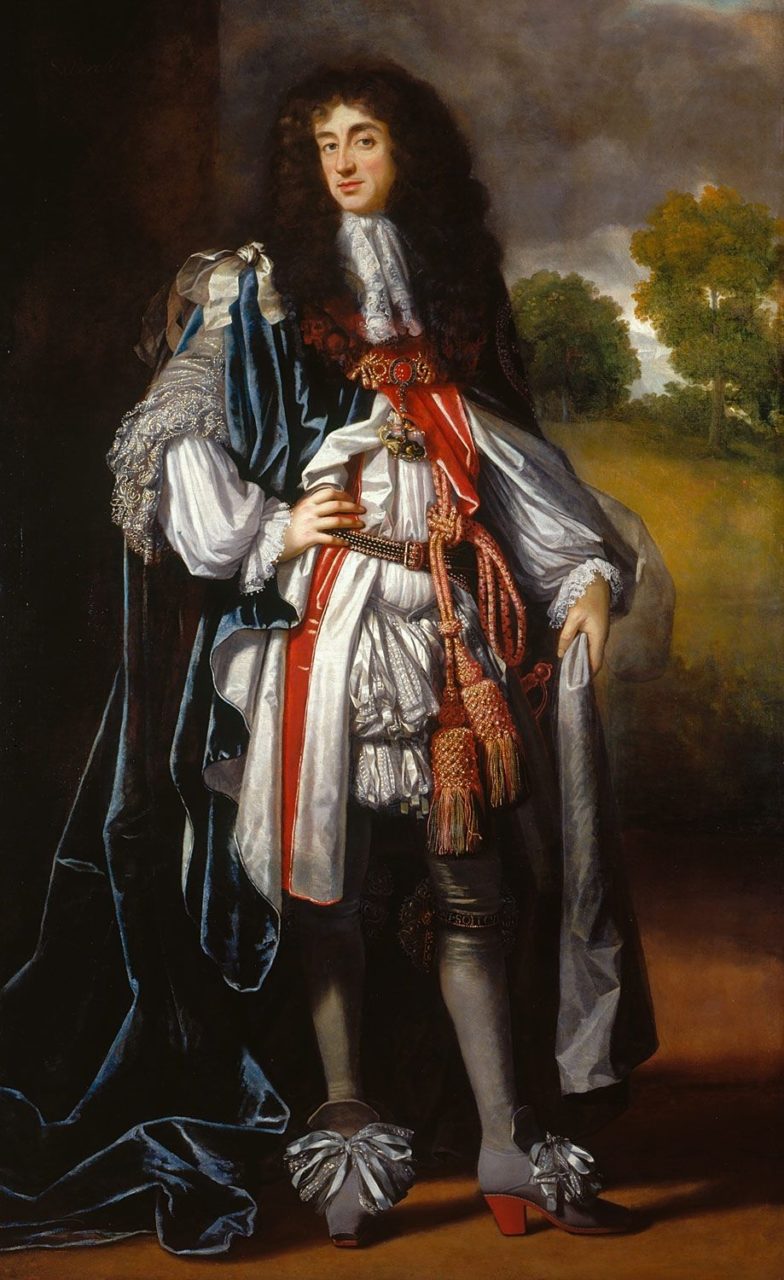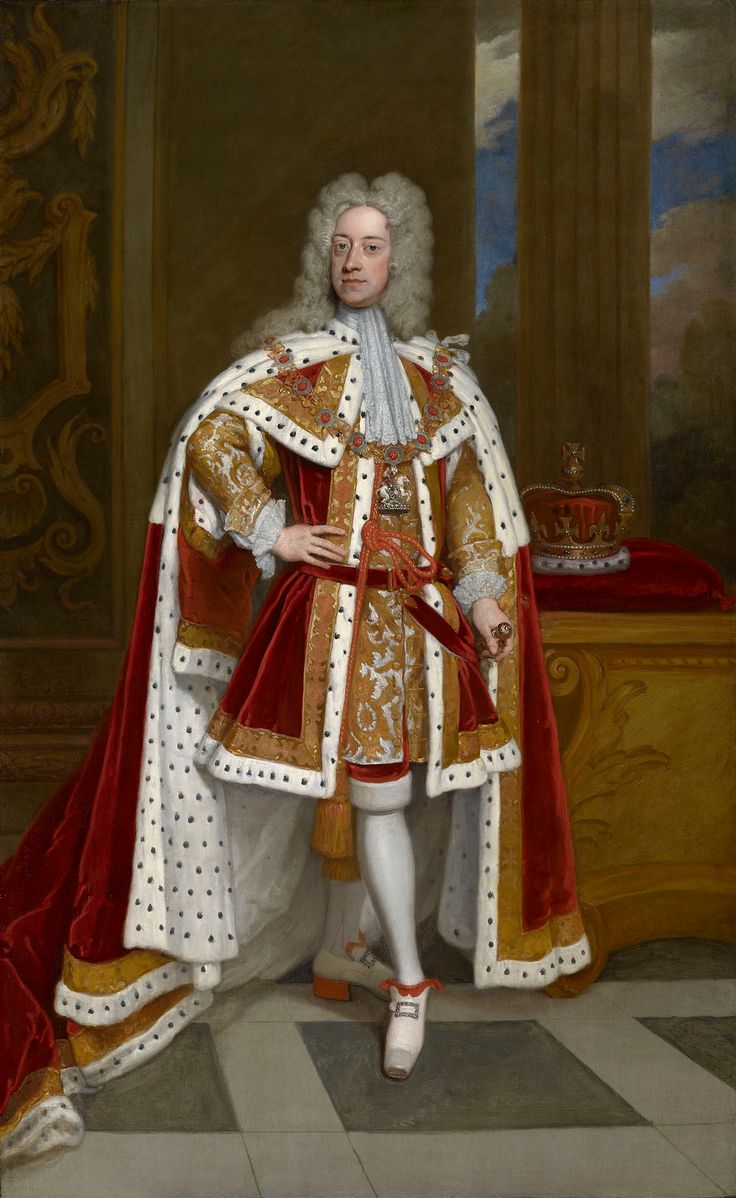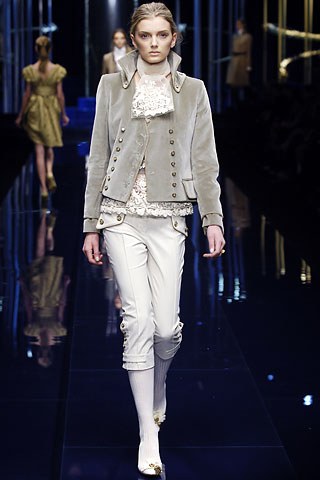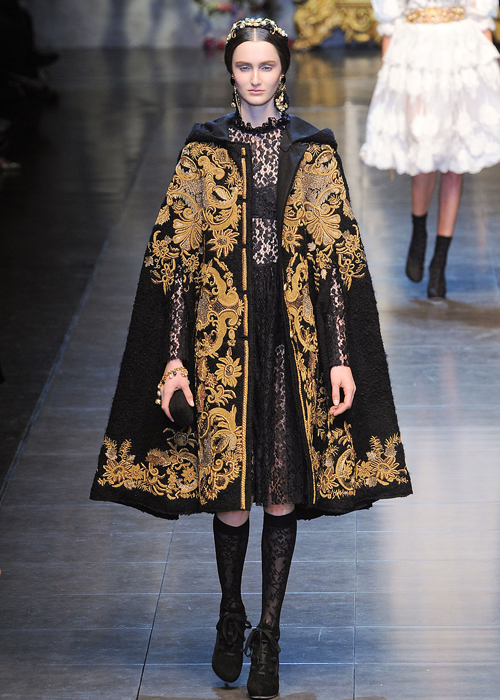In Hyacinthe Rigaud’s most famous portrait, Louis XIV shows the majestic power of an absolute monarch. He is wearing his coronation robe embroidered with the royal fleur de lys along with some key elements of Baroque style such as the cravat, red heels, and the wig.
About the Portrait
Hyacinthe Rigaud (Fig. 1) was one of the most renowned French Baroque painters during the reign of Louis XIV. In his earlier works, he was strongly influenced by Anthony van Dyck, as art historian Cathrin Klingsöhr-Leroy notes. Tessa Fleming has pointed out that the portrait of Louis XIV (1701) recalls van Dyck’s Charles I Dismounted (Fig. 2) in its composition. However, according to Klingsöhr-Leroy, after he was admitted to the Académie Royale, Hyacinthe Rigaud developed the French style of the state portrait, or the portrait d’apparat, as seen in his portrait of the sculptor Martin Desjardins (Fig. 3). As a successful portrait painter who well understood the Ancien Régime, he was commissioned to paint many royal figures (Klingsöhr-Leroy, Grove); figures 4 and 5 are other examples of his royal portraits.
In the portrait of Louis XIV, Rigaud’s best known portrait, the massive column, rich draperies and majestic posture are traditional formulae representing the power and ideal image of a ruler, as Klingsöhr-Leroy emphasizes. But at the same time, the portrait is natural, realistic and life-like; Rigaud makes all the materials palpable, and light and shade reveal the textures of the fabrics. Klingsöhr-Leroy also notes that, with this great portrait, Rigaud earned a reputation in Europe and his style became dominant as the official royal portrait style in France until the late 18th century.
This portrait was commissioned as a gift for King Philip V of Spain, the grandson of Louis XIV. But it was such a great success at court, a copy of the portrait was sent to Spain instead of the original. And this original work became the official portrait of Louis XIV (Fleming). According to Louvre, this painting was shown at the 1704 Salon and remained in royal collections until after the French Revolution when, in 1793, it was handed over to the Muséum Central des Arts de la République, later known as the Musée du Louvre.
Fig. 1 - Hyacinthe Rigaud (French, 1659-1743). Self-portrait, 1696. Oil on canvas; 83 x 65.4 cm (32.7 x 25.7 in). Source: Wikimedia
Fig. 2 - Anthony van Dyck (Flemish, 1599-1641). Charles I at the Hunt, ca. 1635. Oil on canvas; 266 x 207 cm. Paris: Musée du Louvre, 1775 inv. 1236. Source: Musée du Louvre
Fig. 3 - Hyacinthe Rigaud (French, 1659-1743). Martin van den Bogaert, dit Desjardins, 1683. Oil on canvas; 139 x 104 cm (54.7 x 40.9 in). Versailles: Musée National du Château de Versailles et de Trianon. Source: Wikimedia
Fig. 4 - Hyacinthe Rigaud (French, 1659-1743). Dauphin of France; Duke of Burgundy, 1704. Oil on canvas; 129 x 98 cm (50.8 x 38.6 in). Versailles: Salon de l'abondance du Château de Versailles. Source: Wikimedia
Fig. 5 - Hyacinthe Rigaud (French, 1659-1743). Portrait of Louis XIV of France, 1701. Oil on canvas; 238 x 149 cm (93.7 x 58.7 in). Madrid: Museo del Prado. Source: Prado
Hyacinthe Rigaud (French 1659- 1743). Louis XIV, 1701, oil on canvas, 277 × 194 cm (109.1 × 76.4 in). Paris: Musée du Louvre, inv. 7492. Source: Musée du Louvre
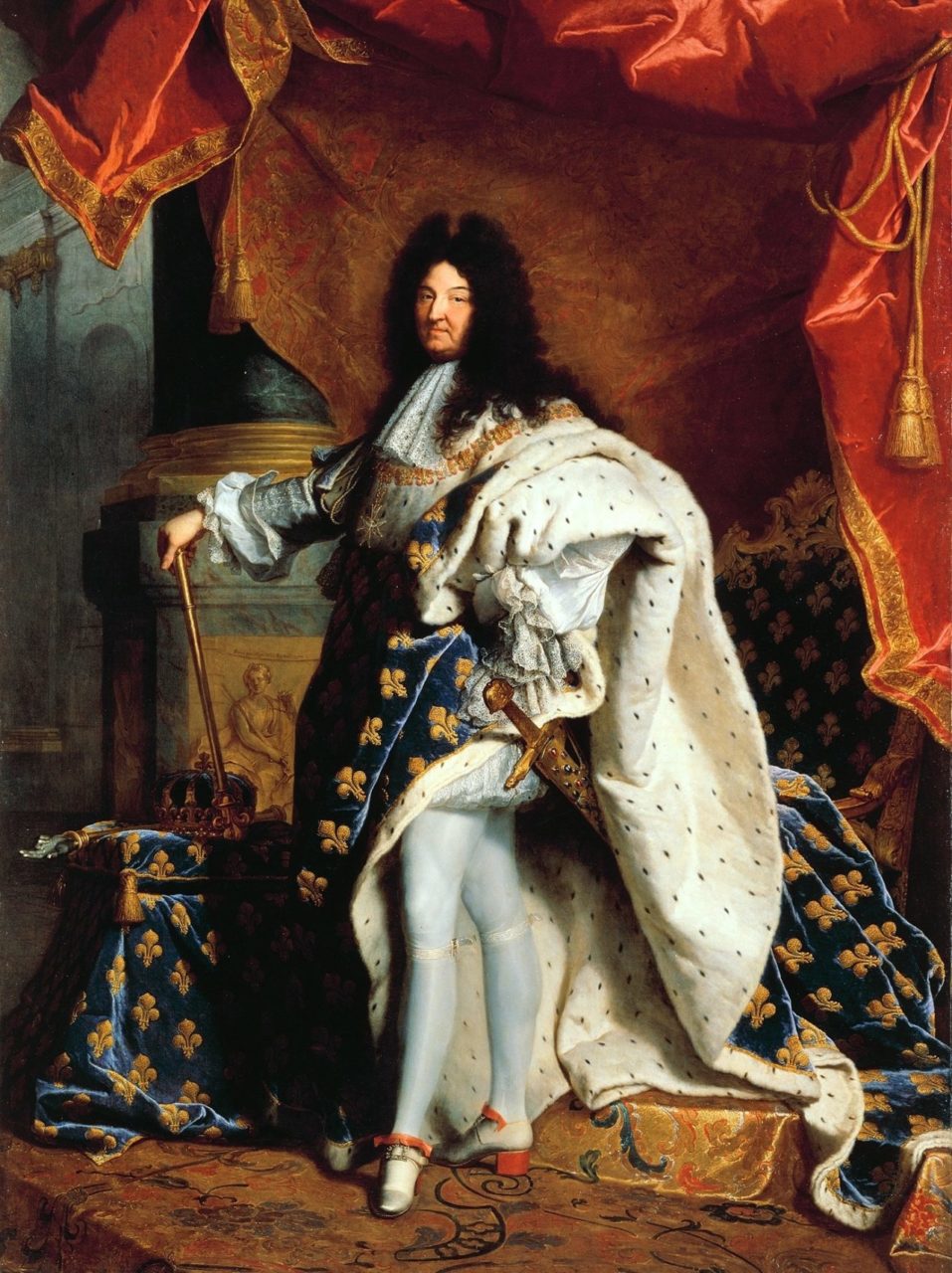
About the Fashion
Louis XIV came onto the throne in 1643 and then started to exercise absolute power based on the concept of divine right, which means that he received his authority directly from God, as Fleming notes. Louis XIV, also known as Sun King, chose fashion as the medium of royal authority. Art historian Philip Mansel explains the role of fashion from Louis XIV to Elizabeth II in his book Dressed to Rule (2005):
“The right dress was believed to encourage loyalty, satisfy vanity, impress outer world, and help royal industries” (xiv).
Louis XIV took advantage of fashion to the fullest. For him, fashion was a way of expressing the extremely aesthetic personal taste, an effective means of regulating the aristocracy with a lot of sumptuary laws, a key instrument of developing the national economy, and a signal that France was now the center of Europe. By the mid-seventeenth century, France emerged as the most powerful country in Europe and, in natural corollary, the fashion capital was moved to Paris from Madrid. He executed fashion reform against the rigid and religious style of the Spanish, as Kimberly Chrisman-Campbell notes in her essay “The King of Couture”:
“The fashions he introduced were colorful, voluminous and ornamental, which were the antithesis of the austere Spanish style. One of the innovations was to mandate that new textiles appeared seasonally, twice a year, and fashion too changed seasonally in France.”
In this context, the Baroque style that Louis needed to enchant the world and also to suppress his nobles came on the scene.
Fleming observes that in this portrait, every detail is showing the divine authority and the majesty of Louis XIV. Especially the embroidered coronation robe reinforces the supremacy of the monarch. The black-and-white ermine fur and the blue-and-gold fleur-de-lys are symbols of the French monarchy. The royal sword fastened to his hip represents his military might, and the royal scepter and the crown confirm his royal authority.
However, Louis XIV is not following all the high-end details of those times. As Abigail Westover emphasizes, unlike the earlier period, where bodice, sleeves, skirts, jackets, and breeches were made to mix and match, clothing in this period was made as separate and entire matching outfits, often made of same fabrics, which is called ‘en suite’. The coat or justaucorps, waistcoat, and breeches were a suiting ensemble. Often the justaucorps and waistcoat were heavily decorated with gold, silver or colored braid and embroidery (Fig. 9). Phyllis G. Tortora and Sara B. Marcketti explained the breeches in this period in Survey of Historic Costume (2015):
“By 1680 the breeches got more fitted and became knee-length, and at the end of the century were very tight and fastened by buttons or a buckle at the outside of the knee. Knee-length stockings were worn with those knee-breeches.” (153)
Instead of wearing the justaucorps and knee-length breeches, which were predominant in Baroque age (Fig. 9), Louis XIV is wearing the traditional white metallic doublet and the trunk hose or short breeches. Figures 6, 7 and 8 respectively display Louis XV at the age of 5, Louis XV at the age of 20 and Charles X. These royal figures are wearing almost the same garments with their coronation gowns regardless of the time period. They are wearing white stockings, white metallic short breeches revealing their leg lines, puffy lace sleeves and the cravat in common. It can be assumed that these were established as the tradition for the royal portrait with a coronation gown in France from the time of Louis XIV. Louis XIV may have wanted to present the consistent image of unchangeable legitimacy or permanent authority, and his descendants were likely eager to appear like him.
Fig. 6 - Hyacinthe Rigaud (French, 1659-1743). Louis XV (1710–1774) as a Child, 1730. Oil on canvas; 195.6 x 141 cm (77 x 55 1/2 in). New York: The Metropolitan Museum of Art, 60.6. Purchase, Mary Wetmore Shively Bequest, in memory of her husband, Henry L. Shively, M.D., 1960. Source: The Met
Fig. 7 - Hyacinthe Rigaud (French, 1659-1743). Louis XV, King of France, 1730. Oil on canvas; 271 x 194 cm (106.7 x 76.4 in). Versailles: Palace de Versailles. Source: Wikimedia
Fig. 8 - Jean-Baptiste Paulin Guérin (1783–1855 (French, 1783–1855). Portrait of the King Charles X of France in his coronation robes, 1827. Oil on canvas. Source: Wikimedia
Fig. 9 - Jacob Ferdinand Voet (Flemish, 1639-1689). Portrait of Don Luis de la Cerda, later IX Duke of Medinaceli, ca. 1684. Oil on canvas; 231 x 173 cm (90.9 x 68.1 in). Madrid: Museo del Prado. Source: Wikimedia
Diagram of referenced dress features.
Source: Author
Fig. 10 - Arist unknown. Portrait of Louis XIV, ca. 1670. Oil on canvas; 196.5 x 159 cm (77.4 x 159 in). Versailles: Palace of Versailles, MV 8369. Source: Wikimedia
Nonetheless, the portrait shows several key characteristics of Baroque style in menswear, which may seem effeminate by today’s standards. The first thing to be noted is the great periwig. From 1670 until after the end of the century, the full-bottomed periwig was prevailing. In the 1670s, the periwig was a natural hair style, curled and flowing. By the end of the century, it became very large and was divided at the high center into two peaks, which is called double peak (Brown 137). Doreen Yarwood explains this in European Costume: 4000 Years of Fashion (1982):
“It was then arranged with a center parting and in a mass of curls and ringlets which rose to a peak on each side of the parting. These then cascaded over the shoulders and down the back nearly to the waist.” (158)
This great wig made hats and collars superfluous. Men always carried a hat, usually under the arm, but rarely wore it. Some wigs were dusted with power to make them white, but most were worn in natural colors (Tortora 154).
Another key feature of Baroque age is the red-heeled shoes, the king’s signature. He is wearing the square-toed shoes with the red tongue, the red sole and the red heel. The tongue is turned back to show the lining collar of red (Brown 136). Unlike in earlier periods, the size of the tongue seems more reasonable. These red heels became one of the most popular and predominant trends in Europe. Mansel points out an interesting example regarding this in his book Dressed to Rule (2005):
“Even William III of Orange, one of the Louis’s most hostile enemies wore red heels after Louis XIV attacked the Dutch Republic.” (15)
The cravat is also a significant factor of Baroque style. The relatively huge collar in the earlier period was replaced with the cravat, a separate necktie from the shirt. With the advent of the justaucorps, the style of cravat became more sophisticated. It was tied around the throat in a bow and hung down in folds over the chest. The neck cravat was fringed or lace-trimmed (Yarwood 162). The Sun King is wearing a delicate lace cravat. The cravat with the expensive lace was reserved for formal use, and a long and plain linen cravat or steinkirk was worn more frequently for both men and women (Brown 137). Here Louis XIV’s fine lace cravat nicely matches with the lace sleeve cuff gathered in at the wrist, which is also one of main characteristics of Baroque costumes. It is interesting to see the doublet cuff turned back to reveal this lace sleeve cuff.
Figure 10 shows Louis XIV at the age of 23. The style is not yet the typical baroque style since he still had features from previous period such as heavy use of ribbons at the shoulder, the sash around the waist and the ribbon embellishment on the shoes. However, many Baroque style elements are also found. He is wearing the new style of knee-length coat or justaucorps, fitted breeches, square-toed shoes, the lace cravat and the full-bottomed wig. In this regard, calling him a trend setter is no hyperbole.
Fig. 11 - Artist unknown. Louis XIV and His Family, ca. 1710. Oil on canvas; 127 x 160 cm (50 x 63 in). London: Wallace collection. Source: Wikimedia
Fig. 12 - Simon Pietersz Verelst (Dutch, 1644-1721). Charles II of England, ca. 1670-5. Oil on canvas; 219.1 x 135.8 cm (86.3 x 53.5 in). London: Royal Collection. Source: Royal Collection
Fig. 13 - Godfrey Kneller (German, 1646-1723). George II when Prince of Wales, 1716. Oil on canvas; 239.2 x 148.4 cm (94.2 x 58.4 in). London: Royal Collection. Source: Royal Collection
Due to Nine Years’ War (1688-1697) and the War of Spanish Succession (1701-1714), France suffered a heavy blow to the national economy, accelerating the decline of Louis XIV. Men’s garments became plainer in this period and the speed of fashion change slowed and colors became somber (Payne 349). In figure 11, Louis XIV is sitting on a chair wearing a suit, which is composed of a justaucorps, a waistcoat and breeches. The coat is made to button all the way down the front, but it is fastened only at the waist line. Its cuffs are huge. The waistcoat is just a few inches shorter than the coat. A puff of shirt sleeve and the wrist ruffle are still exposed, and his red heels are still in vogue. However, the color is dark brown, not the brilliant Baroque palette. And it is notable that his cravat is simply tied without much bulkiness and that there is not as much embroidery on the coats as in the previous century.
After the restoration of the monarchy in 1660, French high fashion had a great influence to England. Charles II (Fig. 12), the new king, brought to the throne a taste for French style. He later tried to establish an English style fashion which is much simpler than that of France (Yarwood 165).
Fig. 13 shows the English King George II following French style of Louis XIV especially in hair and shoes even after Louis XIV died. But still he held a more simplified style of less heavier embroidery and trims on robe and coat in keeping with the British taste for simplicity.
Its Legacy
Dolce & Gabbana seems very interested in Baroque style. In their ready-to-wear collection in Fall 2006 (Fig. 13) and Fall 2012 (Fig. 14), they brought the details of Baroque menswear to womenswear. The heavy gold on the coat, the cravat, the rows of small buttons recall the period of Louis XIV.
Another Italian designer also applied the blue-and-gold fleur de lys to the contemporary fashion. Aquilano Rimondi showed Louis XIV-inspired works in ready-to-wear F/W 2012, and the collection still looks full of glory and elegance (Fig. 15).
Figure 16 is a pair of the famous red-soled shoes of Christian Louboutin. The red-soled shoes begun by Louis XIV are still alive and loved by modern fashion people.
References:
- Brown, Susan, ed. Fashion: The Definitive History of Costume and Style. New York: DK Publishing, 2012. http://www.worldcat.org/oclc/840417029.
- Chrisman-Campbell, Kimberly. “The King of Couture.” The Atlantic, September 1, 2015. https://www.theatlantic.com/entertainment/archive/2015/09/the-king-of-couture/402952
- Fleming, Tessa, “Rigaud, Louis XIV.” Khan Academy. Accessed December 2, 2017. http://www.khanacademy.org/humanities/monarchy-enlightenment/baroque-art1/france/a/rigaud-louis-xiv.
- Klingsöhr-Leroy, Cathrin. “Rigaud, Hyacinthe.” Grove Art Online. Oxford Art Online. Oxford University Press, accessed November 26, 2017, http://www.oxfordartonline.com/subscriber/article/grove/art/T072126.
- Mansel, Philip. Dressed to Rule: Royal and Court Costume from Louis XIV to Elizabeth II. New Haven: Yale University Press, 2008. http://www.worldcat.org/oclc/605887472.
- Musée du Louvre “Louis XIV (1638-1715)”. Accessed December 2, 2017. http://www.louvre.fr/en/oeuvre-notices/louis-xiv-1638-1715
-
Payne, Blanche, Geitel Winakor, and Jane Farrell-Beck. The History of Costume: From Ancient Mesopotamia through the Twentieth Century. 2nd ed. New York: HarperCollins, 1992. http://www.worldcat.org/oclc/659908345.
- Tortora, Phyllis G., and Sara B. Marcketti. Survey of Historic Costume. Sixth edition. New York: Fairchild Books, 2015. http://www.worldcat.org/oclc/972500782.
- Westover, Abigail. “The Baroque Period in All Its Grandiloquence,” April 8, 2012. https://historyofeuropeanfashion.wordpress.com/2012/04/07/the-baroque-period-in-all-its-grandiloquence
-
Yarwood, Doreen. European Costume: 4000 Years of Fashion, 1982. http://www.worldcat.org/oclc/8171068.

